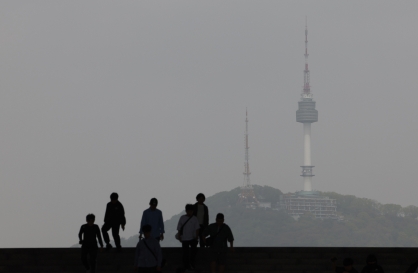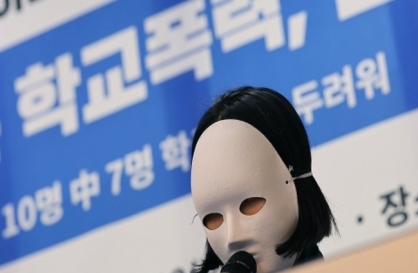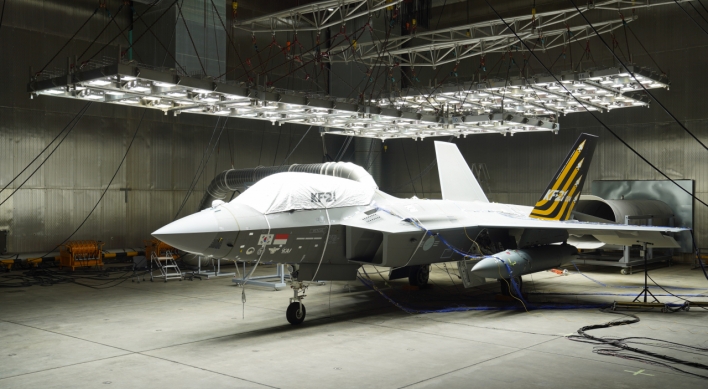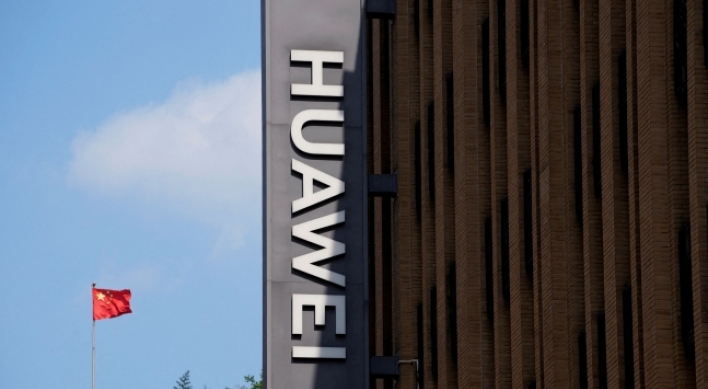A panel of the Cabinet Office announced late last month that if a megaquake occurs in the Nankai Trough, a tsunami higher than 20 meters may hit 23 municipalities in six prefectures stretching from Kanto to Shikoku on Japan’s Pacific side. The prediction represents a worst-case scenario that happens once in 1,000 years.
It may be difficult to build perfect defense against such a massive earthquake and tsunami; but, both the central and local governments must make utmost efforts to minimize damage from the inevitable disasters. Such efforts will make it easier for the nation to recover once it is hit by a catastrophic disaster. The central and local government must push urban planning that is resilient to a major earthquake and massive tsunami from both a short-term and long-term viewpoint.
The Nankai Trough, a subduction zone located off the Pacific coast, stretches some 900 km from the Tokai region to Shikoku. In the trough, an oceanic tectonic plate subducts under a continental tectonic plate. Massive earthquakes have occurred repeatedly in the past. The central government predicts a 60 to 88 percent probability that any one of three powerful earthquakes ― identified as the Tokai, Tonankai and Nankai quakes ― will strike in the next 30 years.
The warning of a possible tsunami higher than 20 meters is based on the revision of the Cabinet Office panel’s 2003 estimate. It reflects new findings from the March 11, 2011, earthquake and tsunami. The 2003 estimate predicted no areas would be hit by tsunami higher than 20 meters. The new report says tsunami that size could hit islands off Tokyo and coastal areas of Shizuoka, Aichi, Mie, Tokushima and Kochi prefectures. The panel assumed a worst-case scenario in which the hypocentral area where a megaquake could happen has been nearly doubled. The earthquake could measure the same as the magnitude of 9 earthquake that struck on March 11, 2011.
The new study predicts that while Tokyo’s 23 wards may be hit by tsunami with the maximum height of 2.3 meters, Niijima Island in Tokyo’s Izu Islands may be hit by tsunami measuring 29.7 meters. It also predicts that the highest likely tsunami could be 34.4 meters at Kuroshio Town in Kochi Prefecture.
The report says areas that may be hit by a tsunami higher than 10 meters will be expanded, covering Tokyo and 10 other prefectures. What is worrisome is that the interval between the occurrence of a massive quake and the arrival of a high tsunami could be very short in some areas. The report says that in Shizuoka and Wakayama, which are closer to the centers of the expected megaquakes, a tsunami could arrive two to three minutes after the earthquake.
Ten prefectures ― Shizuoka, Aichi, Mie, Hyogo, Wakayama, Tokushima, Kagawa, Ehime, Kochi and Miyazaki ― could experience the strongest shaking on the Japanese scale with 7 representing the maximum. These new danger zones total 7,000 sq. km, about 23 times greater than the 2003 estimate said would experience the strongest shaking on the Japanese scale.
As a short-term measure, residents must be taught how to protect themselves. Local governments need to instruct them on how best to evacuate to higher ground as soon as a quake hits a coastal area. The training and education should be repeated so that residents can evacuate on their own judgment. To prepare for a tsunami, local governments must as soon as possible build evacuation centers in highland areas or build evacuation towers, improve evacuation roads and set up signs to show evacuation routes.
Local governments should remember that even if they cannot build anti-tsunami coastal embankments that can completely block a massive tsunami, embankments can weaken the power of such tsunamis and give residents the time needed to evacuate. To protect houses and buildings against strong tremors, it is important to make them quake-proof. The central and local governments should consider improving subsidies to support efforts to make buildings quake-proof. They also should promote projects to build communities in areas that are less threatened by a large tsunami.
Special attention should be paid to the fact that the panel’s latest report says that the height of a tsunami likely to hit the Omaezaki City area in Shizuoka Prefecture ― the location of Chubu Electric Power Co.’s Hamaoka nuclear power plant ― may be as high as 21 meters. The 2003 estimate had predicted a tsunami height of 7.1 meters. This means that a tsunami may wash over the 18-meter-high anti-tsunami embankment that the power company is building to protect the plant. At the central government’s request, the Hamaoka nuclear power plant has been offline since May 2011.
In addition, the maximum shaking in Omaezaki was raised from the earlier 6-plus on the Japanese scale to the top level of 7. The power company says that even if a tsunami clears the embankment, multi-redundancy safety measures to keep cooling functions going can prevent a severe accident. What is most important, however, is that the central government rethinks the wisdom of continuing to operate a nuclear plant in such an area.
(The Japan Times)
It may be difficult to build perfect defense against such a massive earthquake and tsunami; but, both the central and local governments must make utmost efforts to minimize damage from the inevitable disasters. Such efforts will make it easier for the nation to recover once it is hit by a catastrophic disaster. The central and local government must push urban planning that is resilient to a major earthquake and massive tsunami from both a short-term and long-term viewpoint.
The Nankai Trough, a subduction zone located off the Pacific coast, stretches some 900 km from the Tokai region to Shikoku. In the trough, an oceanic tectonic plate subducts under a continental tectonic plate. Massive earthquakes have occurred repeatedly in the past. The central government predicts a 60 to 88 percent probability that any one of three powerful earthquakes ― identified as the Tokai, Tonankai and Nankai quakes ― will strike in the next 30 years.
The warning of a possible tsunami higher than 20 meters is based on the revision of the Cabinet Office panel’s 2003 estimate. It reflects new findings from the March 11, 2011, earthquake and tsunami. The 2003 estimate predicted no areas would be hit by tsunami higher than 20 meters. The new report says tsunami that size could hit islands off Tokyo and coastal areas of Shizuoka, Aichi, Mie, Tokushima and Kochi prefectures. The panel assumed a worst-case scenario in which the hypocentral area where a megaquake could happen has been nearly doubled. The earthquake could measure the same as the magnitude of 9 earthquake that struck on March 11, 2011.
The new study predicts that while Tokyo’s 23 wards may be hit by tsunami with the maximum height of 2.3 meters, Niijima Island in Tokyo’s Izu Islands may be hit by tsunami measuring 29.7 meters. It also predicts that the highest likely tsunami could be 34.4 meters at Kuroshio Town in Kochi Prefecture.
The report says areas that may be hit by a tsunami higher than 10 meters will be expanded, covering Tokyo and 10 other prefectures. What is worrisome is that the interval between the occurrence of a massive quake and the arrival of a high tsunami could be very short in some areas. The report says that in Shizuoka and Wakayama, which are closer to the centers of the expected megaquakes, a tsunami could arrive two to three minutes after the earthquake.
Ten prefectures ― Shizuoka, Aichi, Mie, Hyogo, Wakayama, Tokushima, Kagawa, Ehime, Kochi and Miyazaki ― could experience the strongest shaking on the Japanese scale with 7 representing the maximum. These new danger zones total 7,000 sq. km, about 23 times greater than the 2003 estimate said would experience the strongest shaking on the Japanese scale.
As a short-term measure, residents must be taught how to protect themselves. Local governments need to instruct them on how best to evacuate to higher ground as soon as a quake hits a coastal area. The training and education should be repeated so that residents can evacuate on their own judgment. To prepare for a tsunami, local governments must as soon as possible build evacuation centers in highland areas or build evacuation towers, improve evacuation roads and set up signs to show evacuation routes.
Local governments should remember that even if they cannot build anti-tsunami coastal embankments that can completely block a massive tsunami, embankments can weaken the power of such tsunamis and give residents the time needed to evacuate. To protect houses and buildings against strong tremors, it is important to make them quake-proof. The central and local governments should consider improving subsidies to support efforts to make buildings quake-proof. They also should promote projects to build communities in areas that are less threatened by a large tsunami.
Special attention should be paid to the fact that the panel’s latest report says that the height of a tsunami likely to hit the Omaezaki City area in Shizuoka Prefecture ― the location of Chubu Electric Power Co.’s Hamaoka nuclear power plant ― may be as high as 21 meters. The 2003 estimate had predicted a tsunami height of 7.1 meters. This means that a tsunami may wash over the 18-meter-high anti-tsunami embankment that the power company is building to protect the plant. At the central government’s request, the Hamaoka nuclear power plant has been offline since May 2011.
In addition, the maximum shaking in Omaezaki was raised from the earlier 6-plus on the Japanese scale to the top level of 7. The power company says that even if a tsunami clears the embankment, multi-redundancy safety measures to keep cooling functions going can prevent a severe accident. What is most important, however, is that the central government rethinks the wisdom of continuing to operate a nuclear plant in such an area.
(The Japan Times)
-
Articles by Korea Herald



![[AtoZ Korean Mind] Does your job define who you are? Should it?](http://res.heraldm.com/phpwas/restmb_idxmake.php?idx=644&simg=/content/image/2024/05/06/20240506050099_0.jpg&u=)















![[K-pop's dilemma] Is Hybe-Ador conflict a case of growing pains?](http://res.heraldm.com/phpwas/restmb_idxmake.php?idx=642&simg=/content/image/2024/05/07/20240507050746_0.jpg&u=)